Let's start this review with something that might surprise those familiar with my previous publications over the years - the iTero Lumina has genuinely changed my perspective on Align Technology's scanner offerings. I did not expect to like this scanner as much as I did. As someone who has been openly critical of iTero scanners for close to a decade, questioning their size, performance, and overall value proposition, the Lumina represents a significant shift for the company.
When I first encountered the Lumina at the Chicago Midwinter Meeting in February 2024, my initial impressions were lukewarm at best. It was a nice scanner, but the software was still lacking. However, the restorative update released in IDS 2025 has significantly improved the Lumina. After months of extensive clinical testing, the Lumina has become one of my favorite scanners to use, and it's partly because of the iTero Design Suite (exocad) workflow and Sprintray Midas integration.
So let's delve into the full review of Align Technology's iTero Lumina.
As always, this review maintains complete independence. Align Technology did not pay for this evaluation. This is not a sponsored post. Our commitment to objective analysis, based on clinical experience and testing, remains unchanged. This is the key to what we do here at iDD.
Enjoy the review.
Review At a Glance
The iTero Lumina, with its restorative update, represents a big leap for Align Technology. After years of relative scanner stagnation, the Lumina is actually very good and offers a wide range of features. While premium-priced and still featuring a larger scanner head than most scanners, the combination of exceptional scan quality, dramatically improved workflows, and cloud-based CAD software integration creates a compelling offering. Also, of course, it is the go-to Invisalign scanner.
Pros:
Cons:
The iTero Journey - Context Matters
Align Technology, founded in 1997, disrupted orthodontics with Invisalign clear aligners before entering the intraoral scanner market by acquiring the company Cadent, the owner of the iTero intraoral scanning technology, in 2011 to solidify its position in the digital dentistry market.
For years, iTero scanners were primarily positioned as Invisalign workflow tools rather than comprehensive digital dentistry solutions. Their previous models, although functional for orthodontic applications, faced hard competition with other scanning companies in terms of restorative workflows, performance, ergonomics, and versatility.
To understand why the Lumina represents such a significant milestone for Align Technology, it's essential to acknowledge the market position of iTero scanners before this release. Their previous models were often criticized for their large size, poor ergonomics, and scanning efficiency - criticisms I voiced regularly in my reviews and educational content.
The Lumina marks iTero's first new scanner release since 2019, creating substantial anticipation within the digital dentistry community. More importantly, it represents Align Technology's clear strategic decision not to compete on price but rather to justify premium positioning through performance and software.
At first, the Lumina felt like it was rushed to market. Back in 2024, it lacked the restorative update and, quite confusingly, could only be used to scan for Invisalign or study models. It was a puzzling release to launch a scanner that could not be used for any restorative purposes. However, the restorative update, released in IDS 2025, changes everything. This is a very solid premium scanner option now with a number of great features.
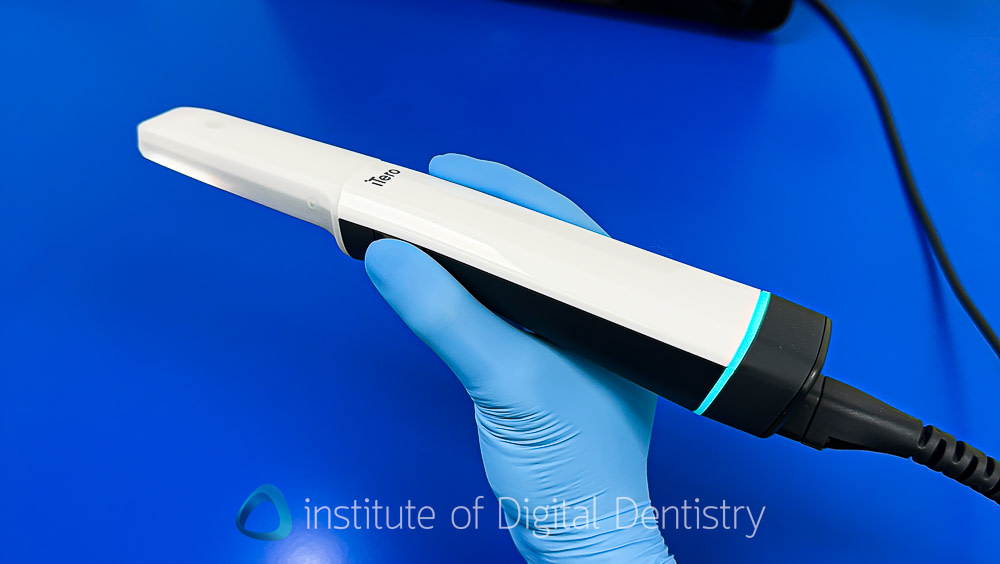
Scan Speed - iTero Lumina
The iTero Lumina delivers impressive scanning speed, positioning it among the fastest scanners available. Scan speeds are no longer particularly exciting in this market; all scanners scan well these days. But I must say that the huge field of view of the Lumina does make this feel like a very fast scanner to use, as it captures so much data in one pass of the scanner. You do have to work around the size of the scanning head, but more on that below.
More interestingly, the Lumina boasts several notable features built into the scanner, such as what the company calls Multi-Direct Capture. The innovation is what underlies Lumina's speed capabilities, huge field of view, and depth of field. Unlike previous iTero models and most intraoral scanners, which use mirror tips to reflect light to sensors in the scanner body, the Lumina brings the sensors and capture technology directly into the scanner tip.
This architectural change enables a much larger field of view of the scanner compared to previous iTero models and any other IOS. The field of view is 34x27 mm, which is 2-3 times larger than that of other scanners. It also has a great depth of field and color reproduction. It is one of the standout features of the Lumina.
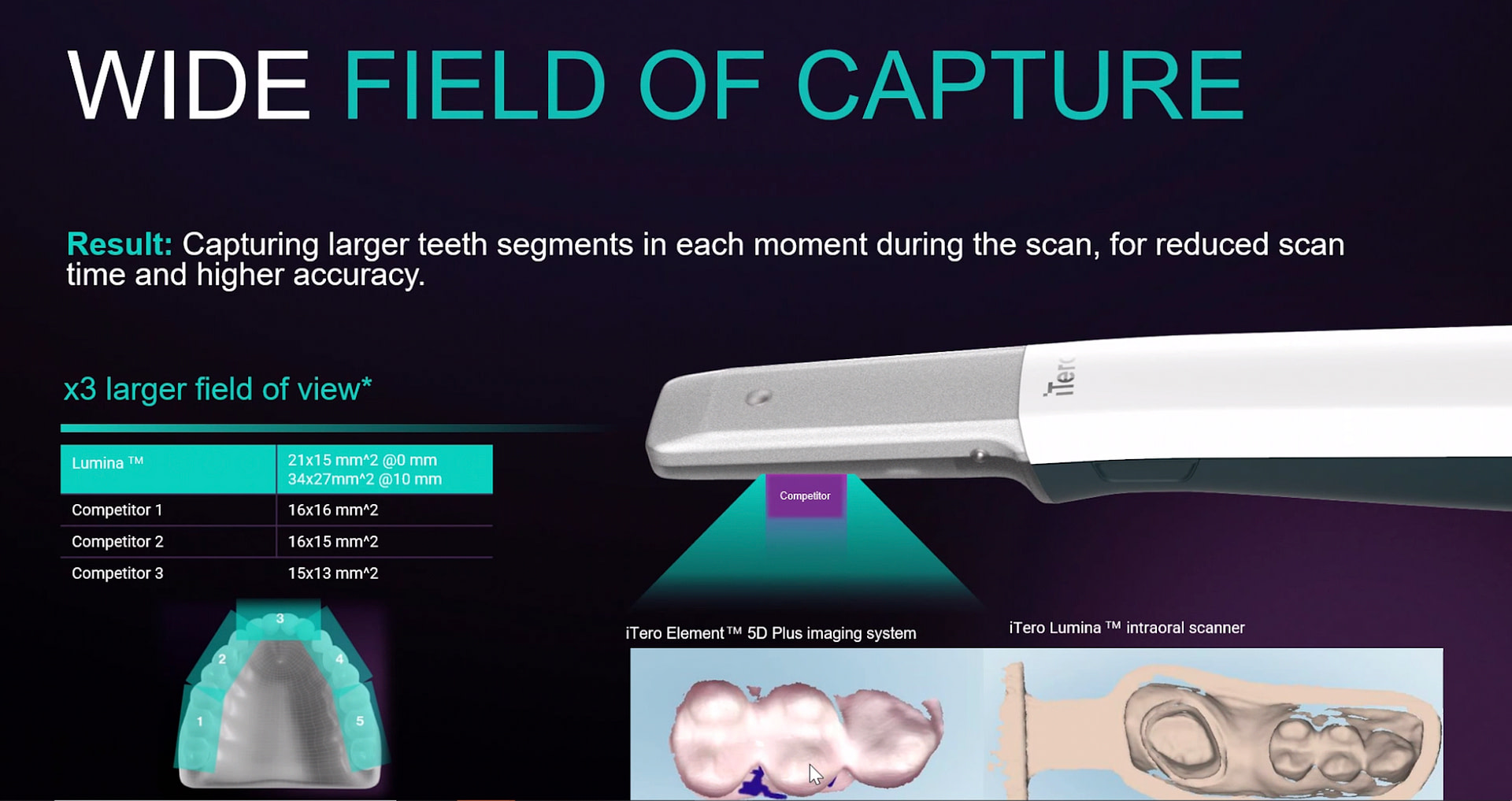
While this approach requires a larger scanner head, it does provide capture capabilities that translate to faster scanning and arguably superior data collection due to the large FOV and the sensors being right at the tip of the scanner head. We haven't seen this scanning tech since the WOW scanner, which didn't perform very well, and it's interesting to see iTero pull this off.
Additionally, the large field of view provides unexpected benefits beyond speed. When scanning upper arches, the scanner effortlessly captures the palate that would require deliberate attention with smaller field-of-view scanners. The large FOV proves particularly valuable for edentulous scanning.
One interesting quirk about the Lumina is that during the scanning process itself, the scan image looks very different from those of other scanners on the market. It is hard to describe, but rather than stitching images together, it resembles more like a mesh cloud that you are filling in. You will see what I mean once you try it out.
This type of data capture means that the scans appear very fuzzy and unprocessed during scanning, lacking detail and looking like a lot of overlapped data. But after post-processing, you get arguably the nicest scans on the market. Additionally, the software now has a "PreView' mode that enables you to see the final clinical view within 5 seconds to check any crucial areas (like crown margins) rather than having to proceed to the final post-processing first.
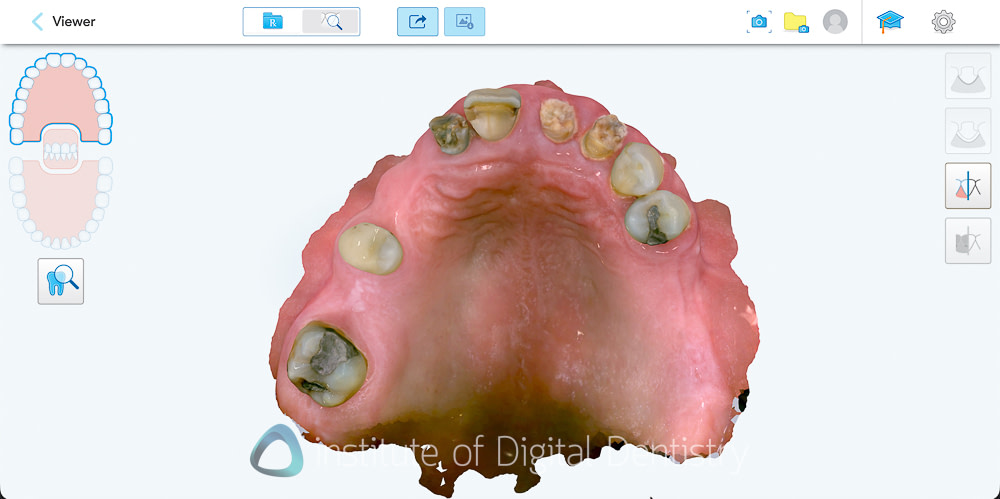
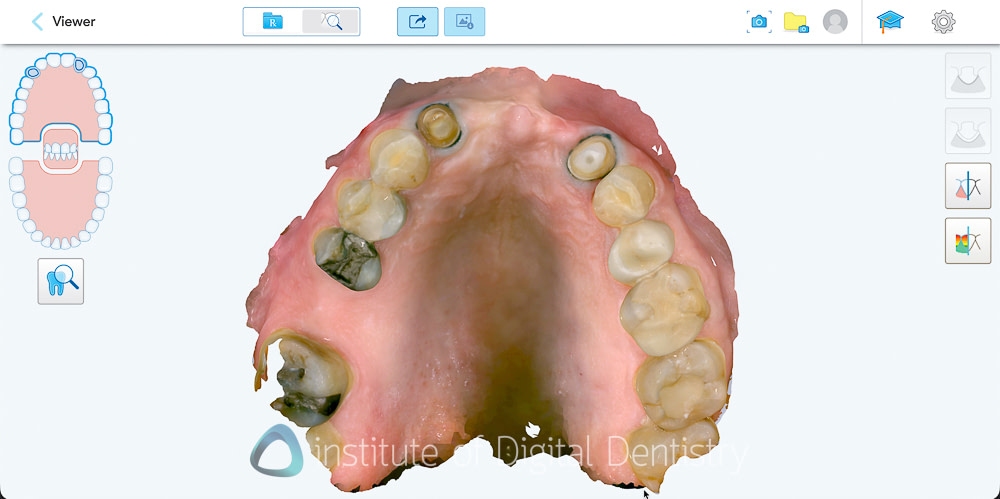
AI Soft Tissue Management
Despite the large field of view, the Lumina's AI algorithms do a very good job at filtering unwanted soft tissue capture.
This is one thing that really impressed me about the iTero Lumina. As mentioned above, scanning speed is becoming an increasingly irrelevant topic in our industry. Almost every scanner on the market is 'fast' now, even the ones priced at $5,000 to $3,000. The difference between scanners now lies in how easy they make the scanning process and how well they stitch images together without errors. Also, another differentiating aspect is the software, workflows, and other features available.
During testing, the scanner consistently avoided capturing the tongue and cheeks. Initially, I thought the large field of view and depth of field of the scanner would mean the scanner would capture too many soft tissue artifacts. However, the software proved excellent at filtering out everything that was not important during the scanning process, whether I was scanning a single crown, an edentulous arch, or an all-on-X case.
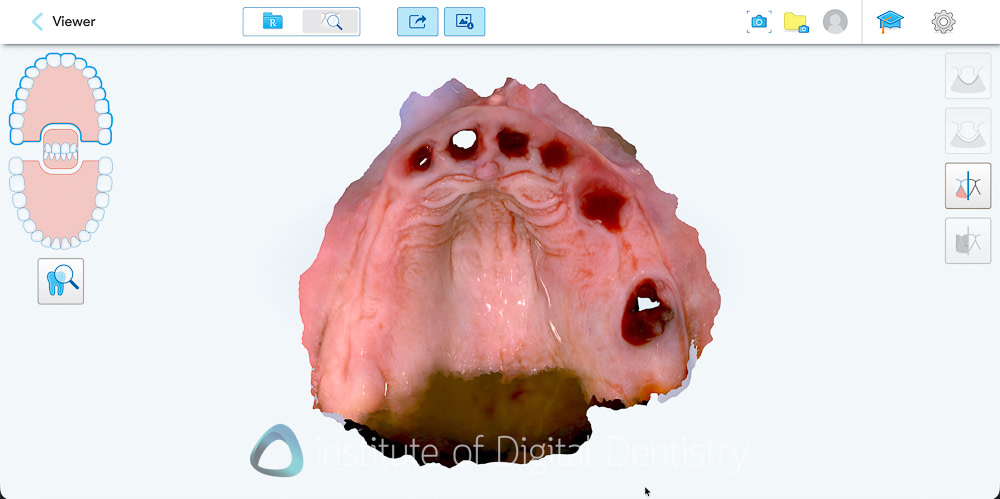
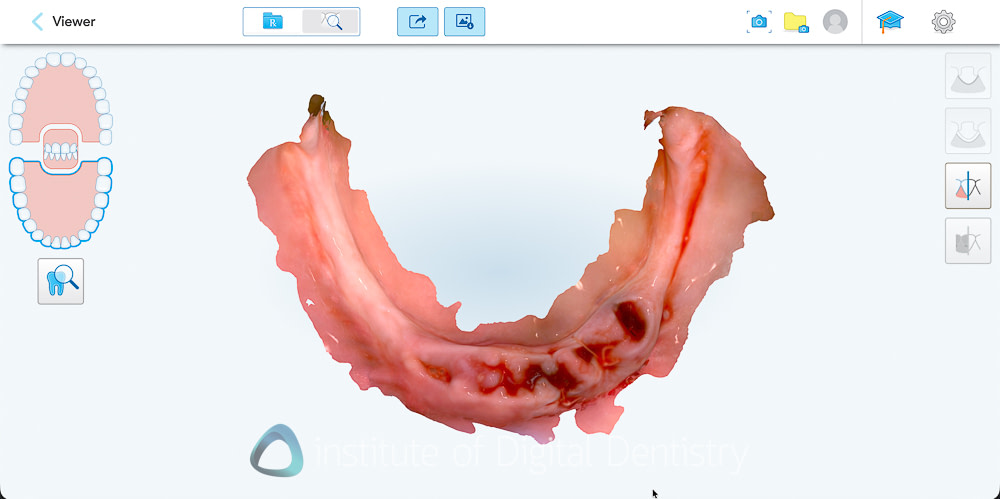
What is even more impressive is the software's simplicity. It is very easy to use software with a minimalistic style design. To me, this is how soft tissue filtering should be. In the background, and just works.
There is no list of buttons or toggles to change the sensitivity of the AI; rather, it seemed 'just right' for all the cases I scanned. If required, such as for extraoral scanning of an appliance, you can turn off the AI, which is hidden behind the right-click menu.
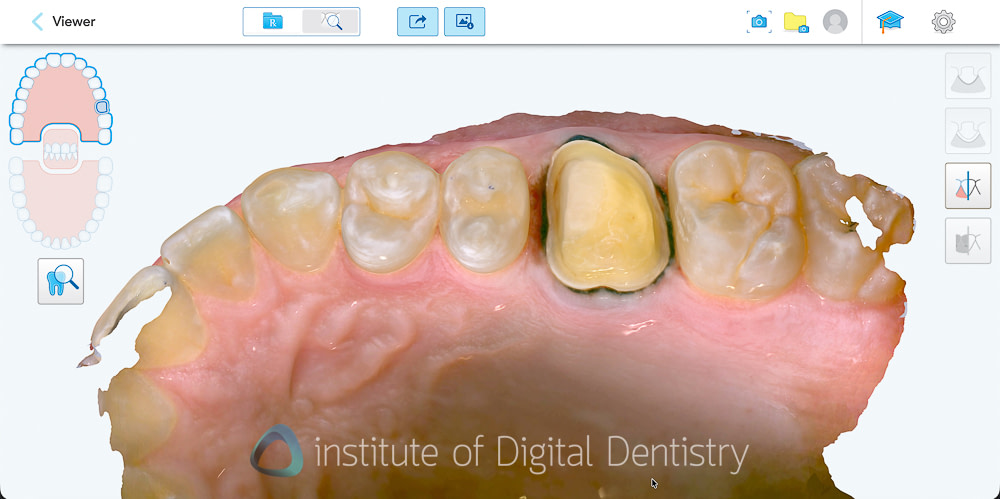
Design and Build Quality
The Lumina represents a substantial improvement in iTero's physical design of its scanners.
While still larger than some competing scanners, it's dramatically more manageable than previous iTero models. The scanner feels much smaller than the Element 5D and well-constructed, with materials that convey premium quality throughout. LED rings, high-level build quality, and other features all make it feel definitely premium.
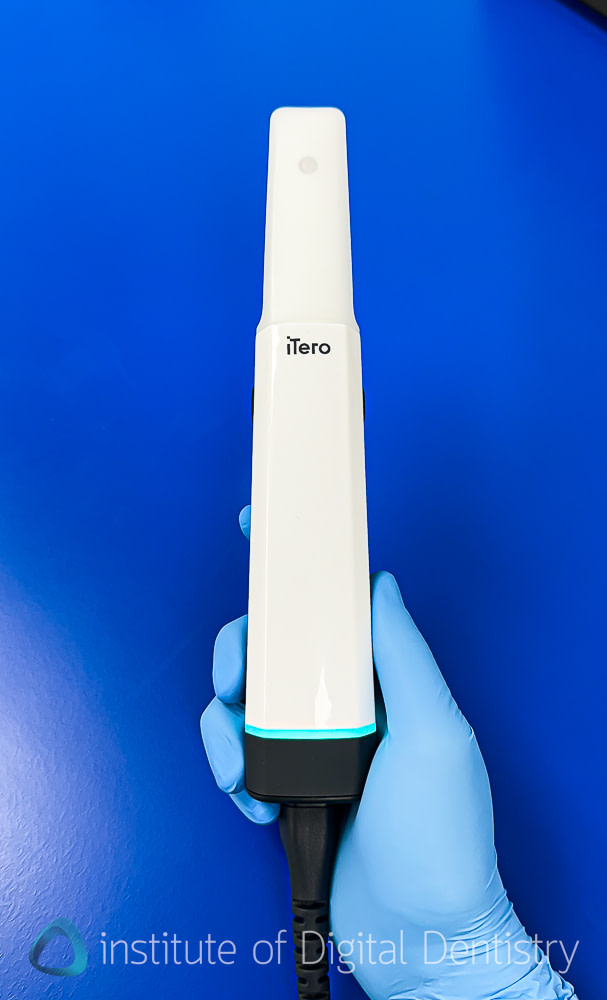
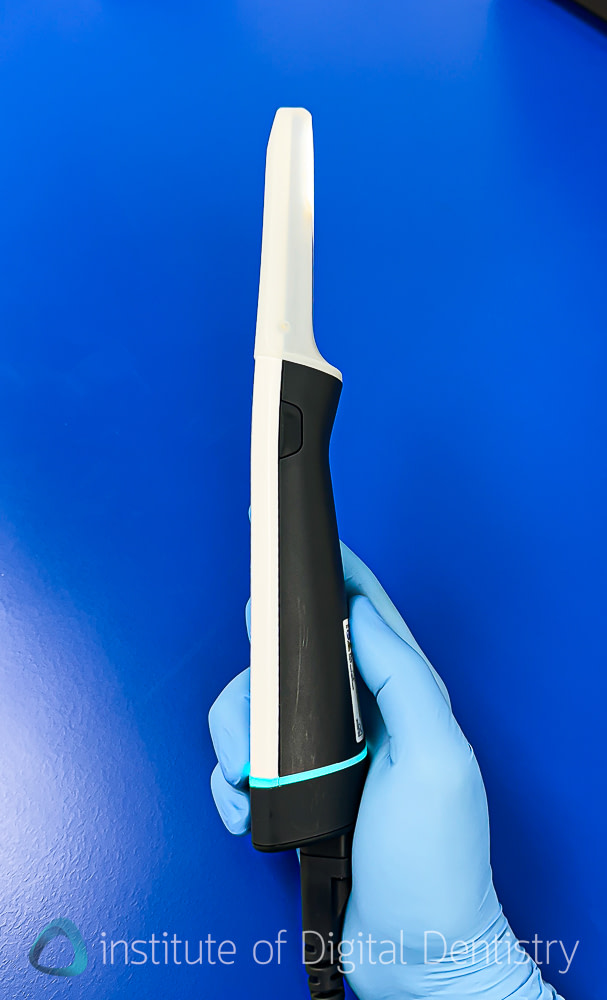
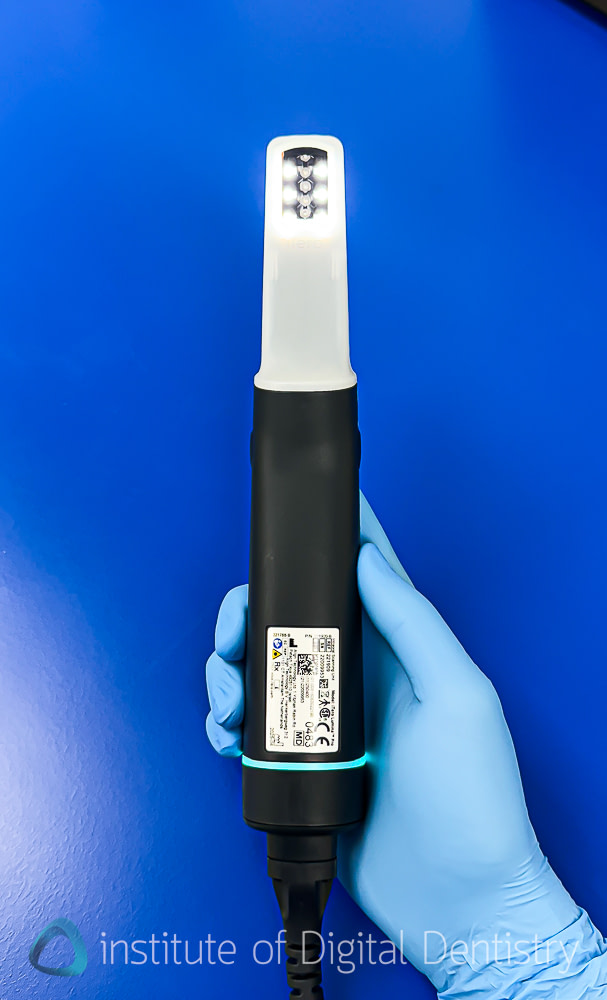

iTero Lumina 14th from the left. Note that it is of a similar length to many other scanners, but the scanner head is wider.
The scanner is 50% smaller than the previous iTero Element 5D (see the huge difference in the picture below), weighing approximately 260 grams. A significant improvement, and overall, not bad in today's market, but not the lightest scanner you can buy. The lightest modern-day scanner on the market, for reference, is the Shining 3D Elite at 124g. However, the Lumina is lighter than the TRIOS 5, 6, DEIXS Imprevo, and many other new releases, albeit these are wireless scanners.
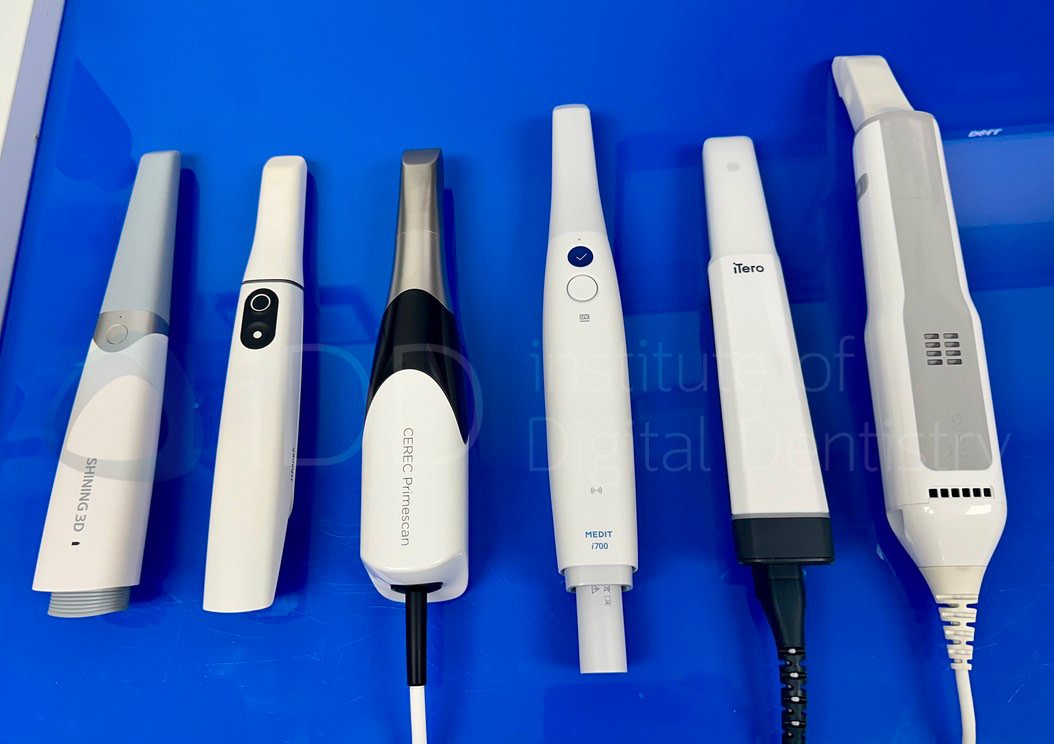
On the far right is the iTero Element 5D. The Lumina next to it is a huge improvement.
The larger scanner head remains the primary physical challenge with the Lumina. The scanner head itself is quite wide. Accessing distal surfaces, particularly distal of second molars, requires technique adjustments compared to more compact scanners. However, you do develop workarounds, and the excellent texture quality often makes you feel compensated for the size constraints. Just note that this scanner is more challenging to use in a tighter area compared to others - even for me, but not impossible. I never had a scan that I couldn't complete.
The scanner features two scan buttons, one on each side of the scanner, which are well-positioned for a pen grip. There is no more 'touch pad' like seen in previous iTero scanners.
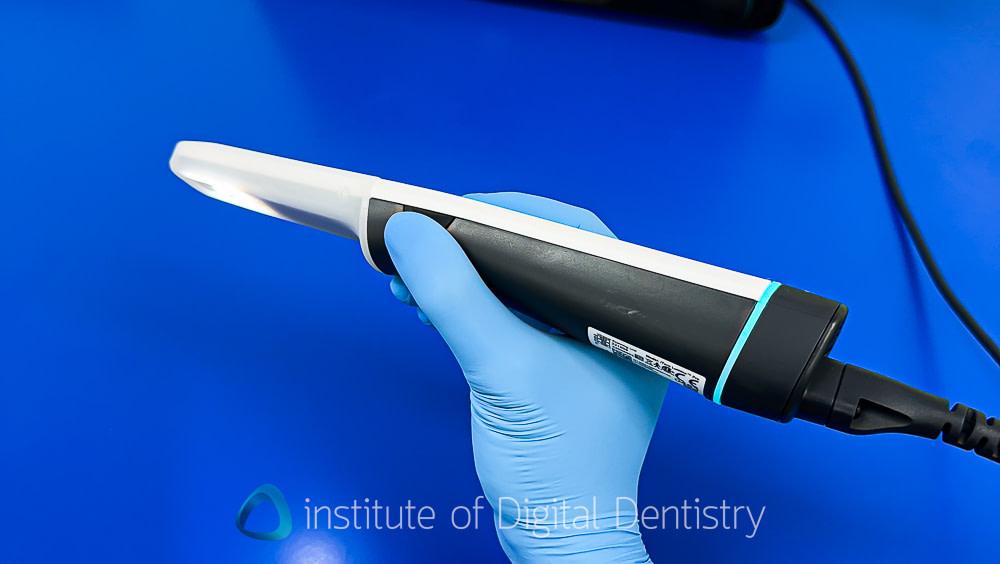
The scanner is not wireless and has a wired connection through a proprietary cable. There are two options: either the iTero Cart or the Portable tablet version. I have been using the tablet (called the Mobile version) and found it to be nicely designed as well. This is the same Tablet as the iTero Element 5D Plus and therefore allows for simple upgrading of the scanner if required.
The tablet is quite thick, but it boasts excellent resolution with nice colors, is responsive to touch controls, and I found it to be a great option, especially for patient communication and for those who may want to move this around different practices. The mobile version also has an integrated battery, allowing it to be used briefly without power and moved around the practice without needing to be shut down. The Cart also looks premium, and with the iTero Lumina, they have changed the colors to match the aesthetic compared to the previous generation iTero scanners.
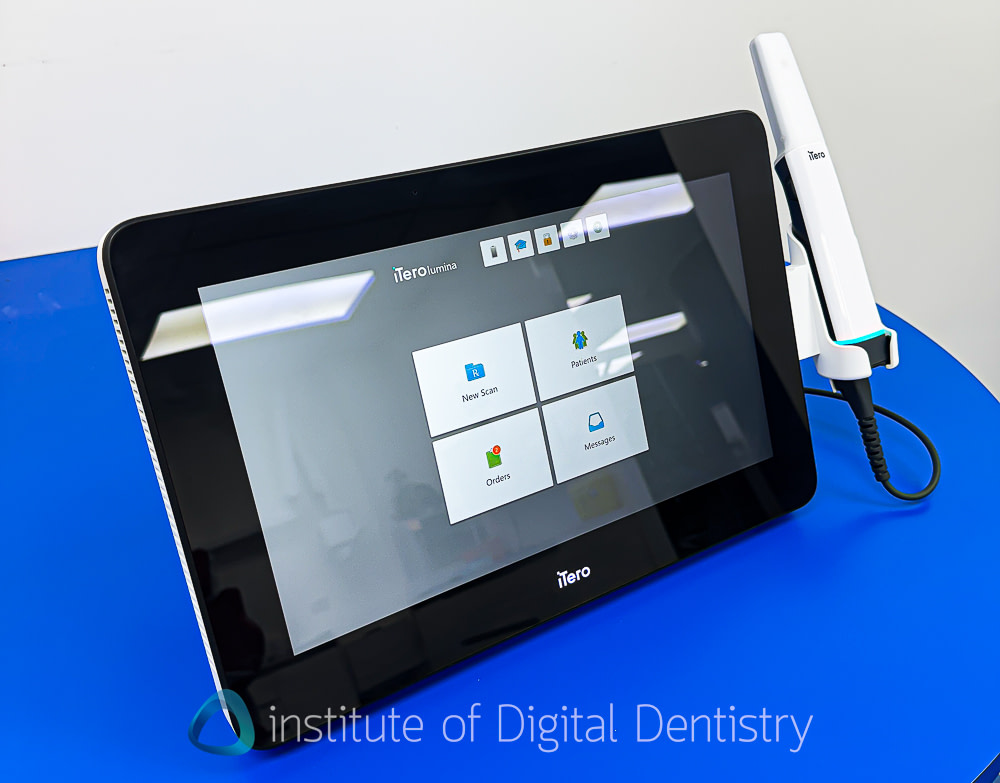
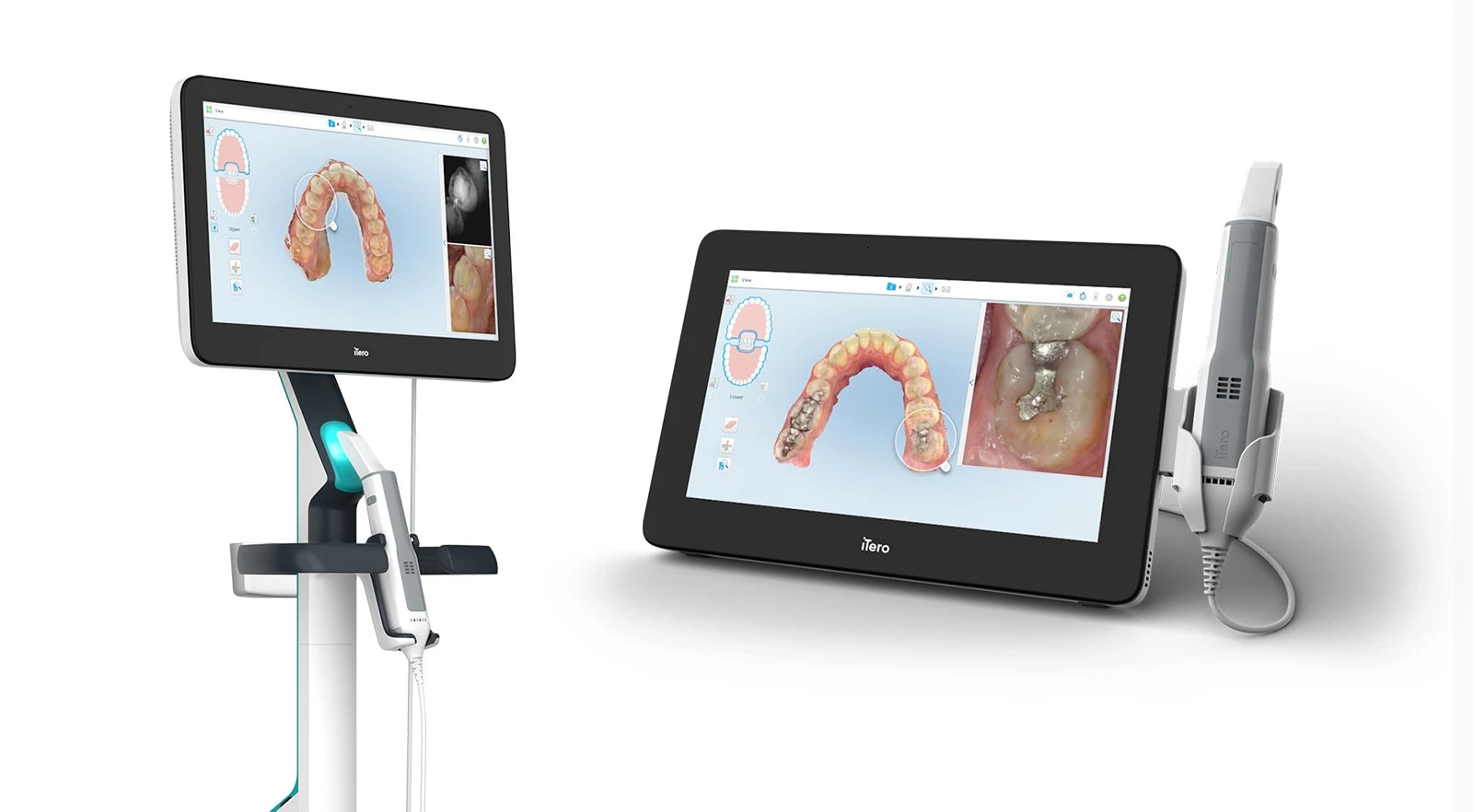
Lastly, I will mention that this scanner is not very drop-proof, likely due of the numerous tech and scanning modules positioned directly on top of the scanner head. I suggest being careful when handling this scanner and making sure not to drop it (ask me how I know). It's likely a good idea to be on the iTero service plan to cover drops or to include it in your clinic's insurance.
iTero Lumina Single-Use Scanner Sleeves
The Lumina continues iTero's single-use sleeve approach, though with some improvements over previous versions. This represents a fundamental difference from most (if not all) scanner companies that use autoclavable tips.
The new sleeves for the Lumina are substantially firmer and more durable than previous iTero sleeves. They're constructed from much firmer plastic that clicks securely in place, seemingly creating a better seal.
One benefit of the single-use sleeves is that they are brand new each time, meaning they arguably have the ideal optical properties during use for each patient, ensuring optimal scans every time. No scratched mirrors, water marks, or cracked scanner tips. It also guarantees sterility for each patient.
The downside is the costs. Single-use sleeves increase ongoing operational costs compared to autoclavable tips. A box of 25 scanner tips costs approximately $70, which equates to nearly $3 per patient scan, representing a consistent per-scan expense that practices need to be aware of. It also generates a lot of waste, but let's not get into that.
For your interest, single-use scanning tips are now sold with TRIOS 5 and 6, and are even included in the box. Perhaps more companies will follow suit with the idea of single-use tips. I personally prefer autoclavable.
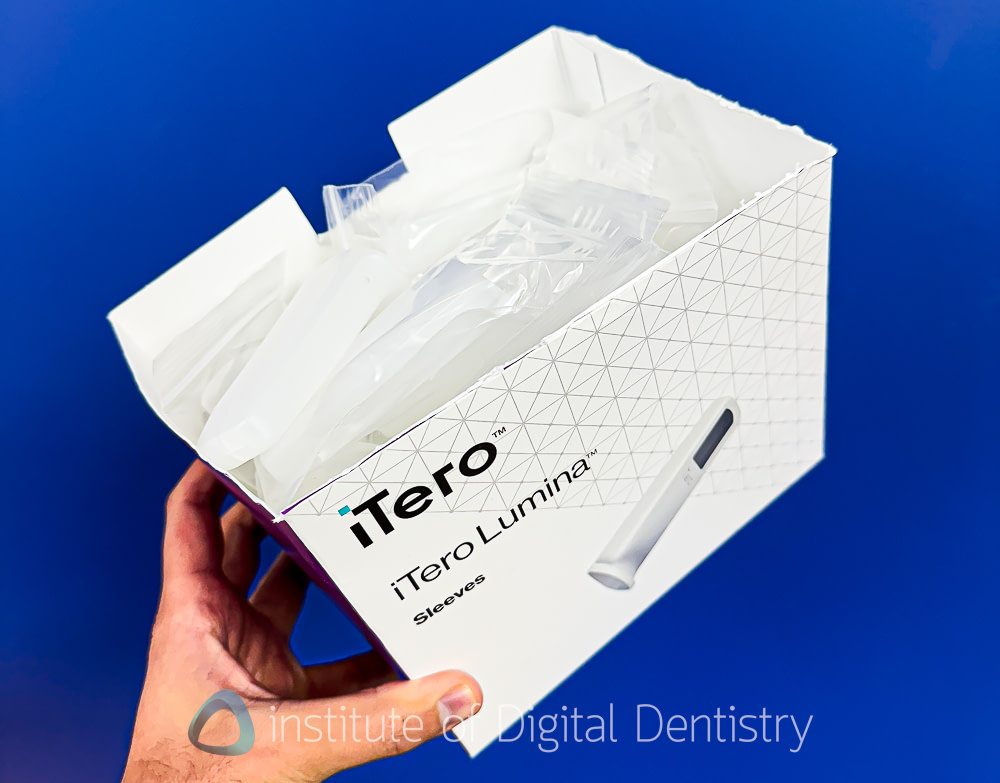
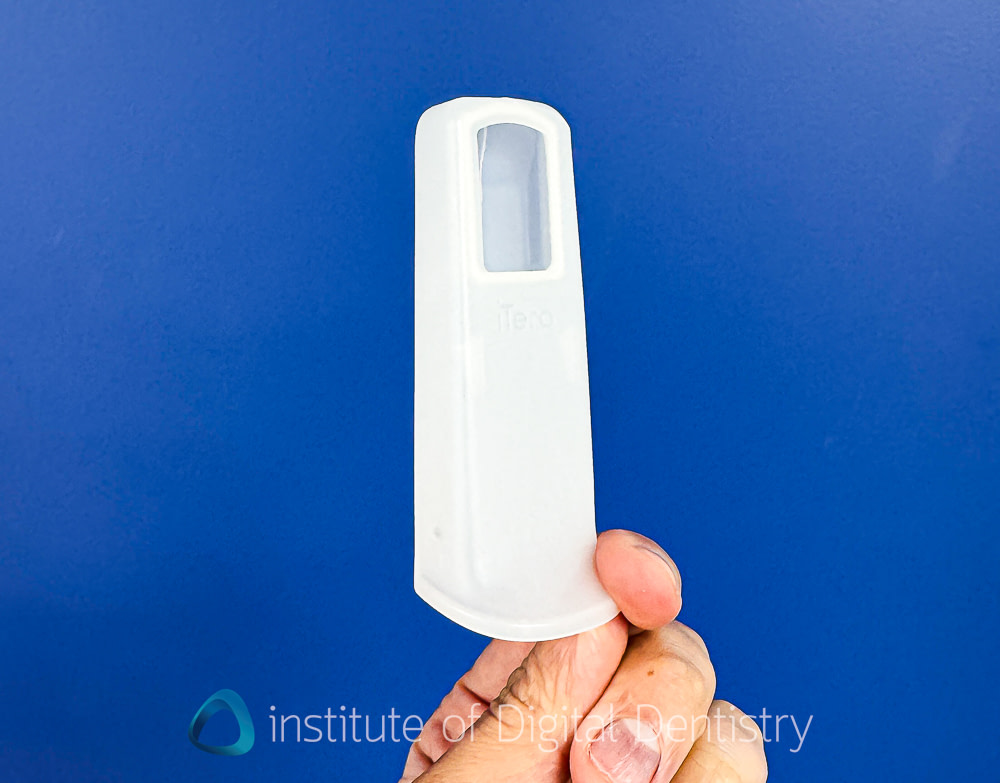
iTero Lumina Accuracy
The iTero Lumina demonstrates excellent clinical accuracy across all indications. This is validated through my own extensive clinical testing and study methodologies I conducted for a research paper. There is also already some published research in the literature confirming this.
In general, this scanner handled every indication I threw at it very well. In my opinion, this is due of two main factors: the large FOV and excellent software. The large FOV of the Lumina (2-3 times that of other scanners) means that there is less stitching and, therefore, likely fewer stitching errors. The software handles scanning well, with rare instances of double images or scan stitching issues. Although the pre-processed scan images appear 'fuzzy' and unrefined, the post-processed ones are very nice, sharp, high resolution, and rarely have any stitching error.
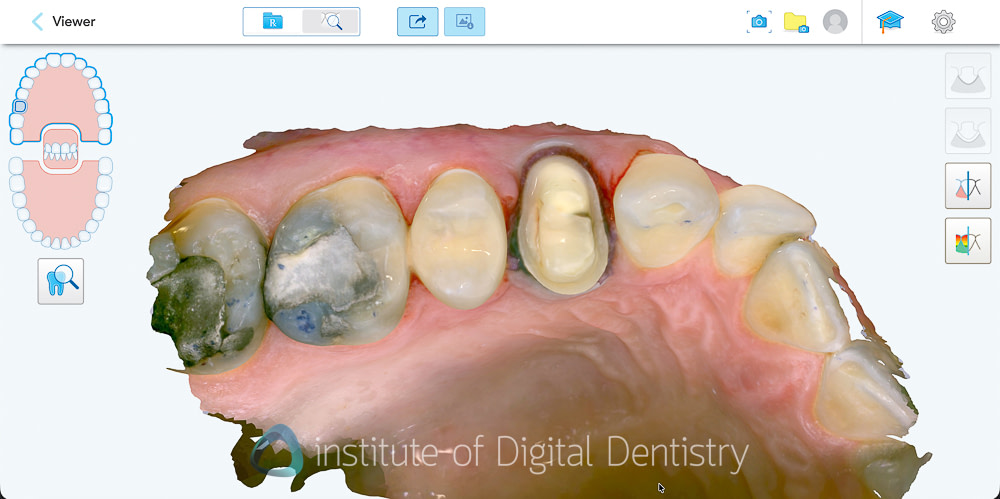
According to this paper, the Lumina showed superior accuracy compared to TRIOS 5, CS3800, Medit i700, and Alliedstar scanners. The testing involved three operators performing 30 repetitive scans with each scanner, with results showing that Lumina's accuracy was higher than that of all four competitors, resulting in a total error reduction ranging from 0.11% to 0.46%.
Now, being more accurate does not necessarily mean the others are 'inaccurate'. I have used all these scanners in my practice and lab for in-house manufacturing of prosthetics, and they all work effectively. Accuracy, of course, also depends on the operator's scanning technique and any errors they introduce. If I were to guess why the Lumina seems to have the highest accuracy, I would say it is once again because of its large FOV. It makes logical sense; the scanner and software need to stitch together fewer images because of the large size of each individual image taken during scanning. This logically will mean better accuracy.
My own clinical testing across a range of indications also confirms the iTero Lumina's excellent accuracy in real-world applications. But what I find more interesting is how some indications are very easy to scan with the Lumina compared to other scanners, such as all-on-x cases or edentulous scanning, thanks to the large FOV. It just takes less time to scan a large and wide area with this scanner compared to a smaller scan window.
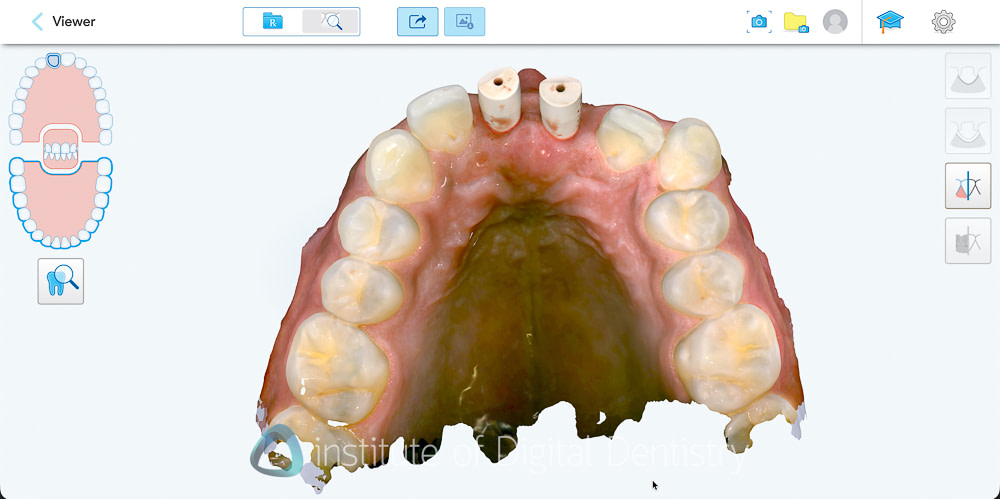
Full-Arch and All-on-X Accuracy
One of the most surprising, and frankly, impressive discoveries in my clinical testing of the iTero Lumina has been its ability to accurately capture full-arch implant cases without relying on photogrammetry or horizontal scan body systems. Traditionally, achieving high accuracy for all-on-x cases requires photogrammetry setups like iCam4D or the use of horizontal scan bodies (e.g., Shining 3D IPG) to minimize stitching errors and spatial distortion. However, my initial results with the Lumina suggest that iTero has pulled it off, which could be a game-changer.
In my independent testing and research methodology (not funded by Align, by the way), which directly compared the iTero Lumina, iCam photogrammetry, and horizontal scan bodies such as IPG, Scan Ladder, TruAbutment, etc, the Lumina demonstrated clinically acceptable accuracy for full-arch implant scans. This finding genuinely surprised me. Although the company mentioned this in the launch materials of the restorative update, I considered it marketing spin.
So, as I try to explain these results, I think again it comes back to Lumina’s large field of view, which seems to be the key factor enabling such performance. Because each scan frame captures a wider area (up to 34 × 27 mm), fewer images are required to complete a full arch. This naturally leads to less stitching and, therefore, fewer cumulative errors across the arch.
To be clear, more peer-reviewed research is needed to fully validate these findings across larger sample sizes and diverse operators. But based on my testing, the Lumina’s ability to achieve this level of accuracy, without photogrammetry or specialized scan bodies, represents a major leap forward for intraoral scanning technology. It’s a development that could simplify full-arch digital workflows dramatically, reducing equipment complexity and cost while maintaining excellent accuracy.
If these results continue to be replicated in wider clinical studies, it would not be an exaggeration to say that Lumina challenges the long-held belief that intraoral scanners cannot be used for all-on-x workflows alone. For now, though, it’s an exciting indication that we may finally be approaching a point where a single intraoral scanner can confidently handle full-arch implant scanning with true precision.
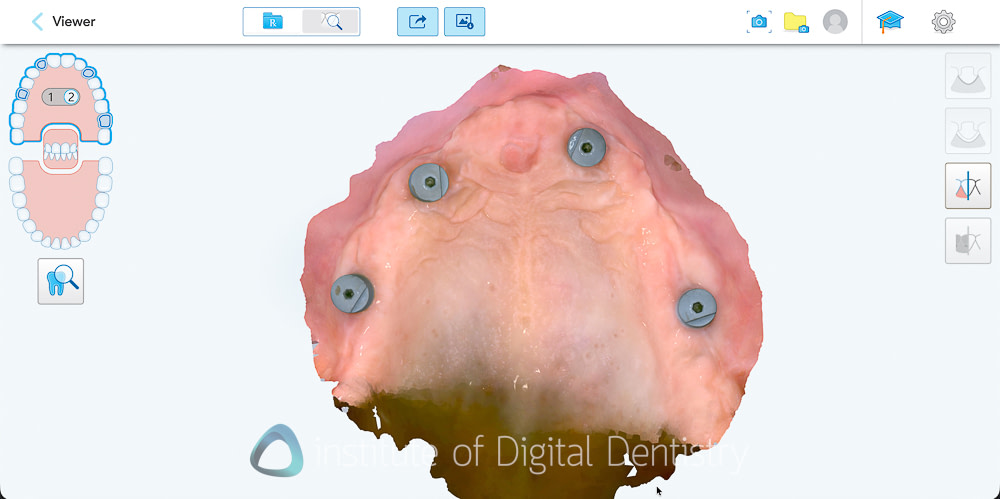
Excellent Scan Textures
Beyond dimensional accuracy, my favorite part of the Lumina is the scan textures and quality. It produces exceptional final scans. These are the nicest I have seen on the market.
The photorealistic textures are simply unmatched by any other scanner currently available in terms of detail, resolution, and colors. These visuals offer both clinical and communication advantages, and they work well within the extensive range of patient communication apps available within the Align Oral Health Suite.
These scan images really are nice to look at, even for patients. I mean, the detail capture is market-leading, with the scanning picking up even the twists on a ligature tie (see the images below). Gingival texture, tooth characteristics, and restoration details appear with clarity that approaches the quality of intraoral photography. It really is incredible tech.
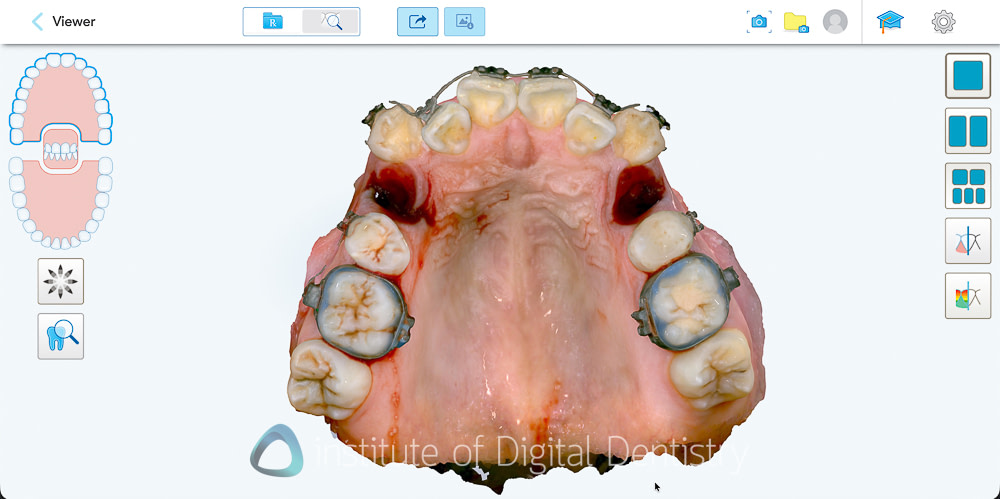
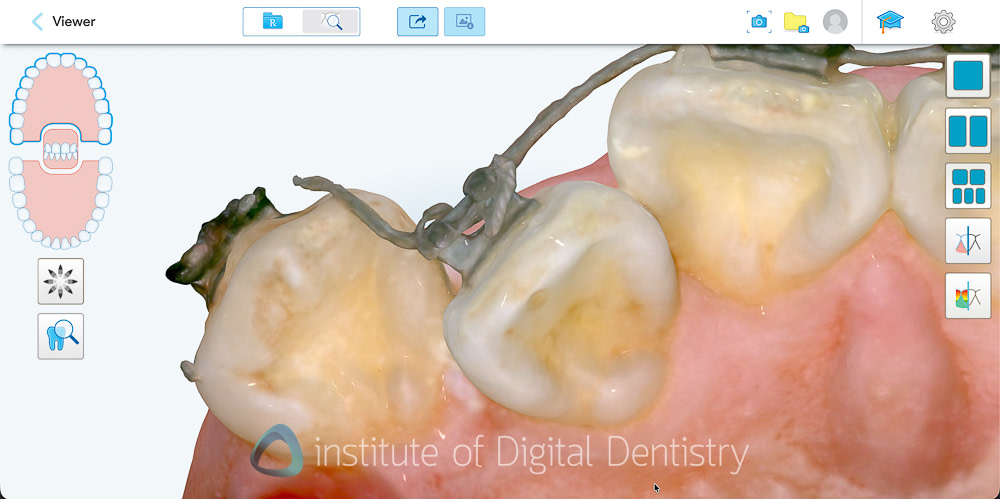
Software and Ecosystem
The March 2025 software update transformed the Lumina from a capable scanner with clunky workflows into a more comprehensive digital dentistry platform. The improvements in the user interface are significant, and it's amazing to see what software can do to a scanner offering and completely transform it.
Like all other scanners, case creation and management flow more naturally through intuitive interfaces. Many of the issues I had with the previous iTero software have been addressed (like the weird iCast options, etc), and I am told that more improvements are planned for next year.
I think one thing that stands out with the iTero software is just how simple and easy everything is to use. Now it really will depend on your preference. Some people prefer having numerous toggles and options, along with complete workflow flexibility. One scanner software that comes to mind, offering a wide range of customization options, is DEXIS. On the other hand, we have iTero, with simple buttons, menus, and UI, and it looks very simplistic, but in a good way. It never felt dumbed down, just stripped of the noise. The simplicity does come with its own drawbacks, of course, in terms of flexibility.
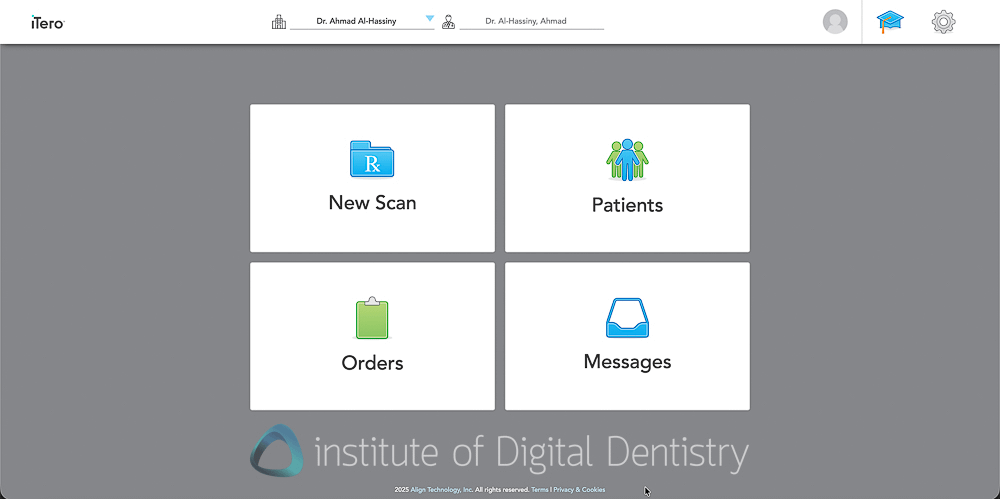
The scanning process guides users effectively without being intrusive, and post-processing occurs seamlessly in the background. These workflow improvements address long-standing criticisms of iTero software usability. One thing that I wish were improved was the 'scanner initialization' step, which occurs if you just boot up the iTero and try to start a scan. This is like a warm-up step and takes 2-3 minutes before you can use the scanner. It cannot be skipped, and I found it annoying a couple of times when I impromptu wanted to use the iTero Lumina.
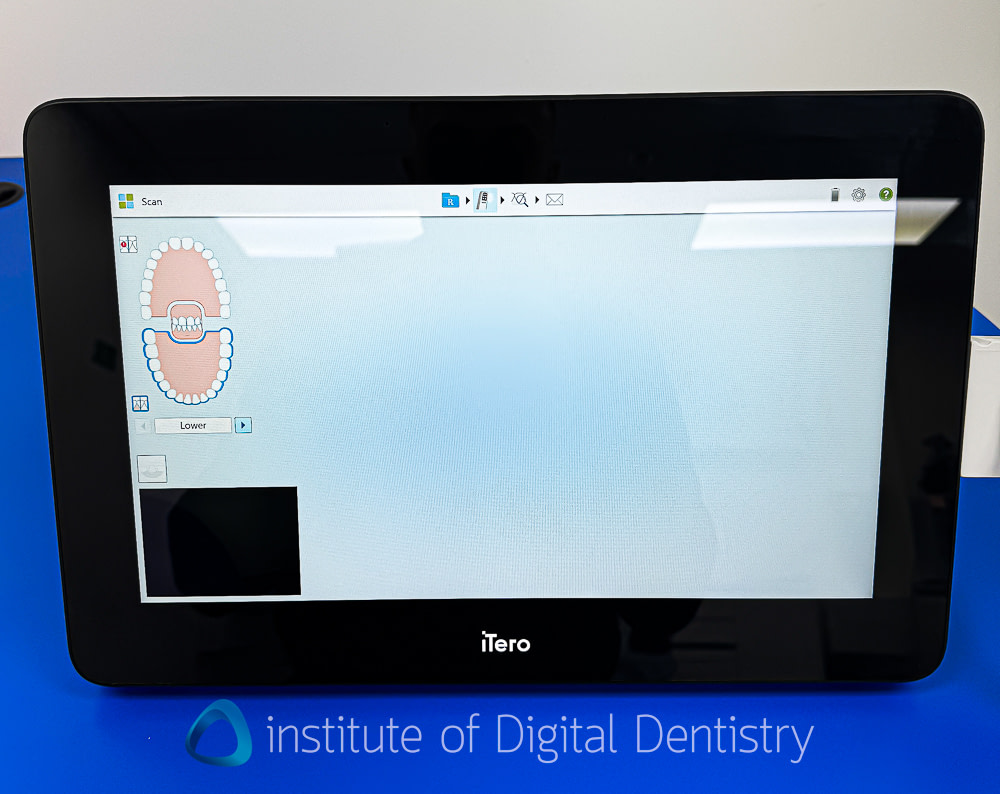
Although things are improving, there are still areas that need of improvement. The lab form could be simpler - it's not terrible, but it could be more streamlined with less clutter. We also need more workflows and scan windows for specific indications, such as dentures or all-on-x, which are currently lacking.
Currently, you cannot easily add extra scan windows, and some of the workflows feel rigid. Simply, the software's flexibility isn't yet there for complex cases, without having to open multiple files for the same patient (although the scanner is capable of scanning the cases), and this is something I hope they address in future updates.
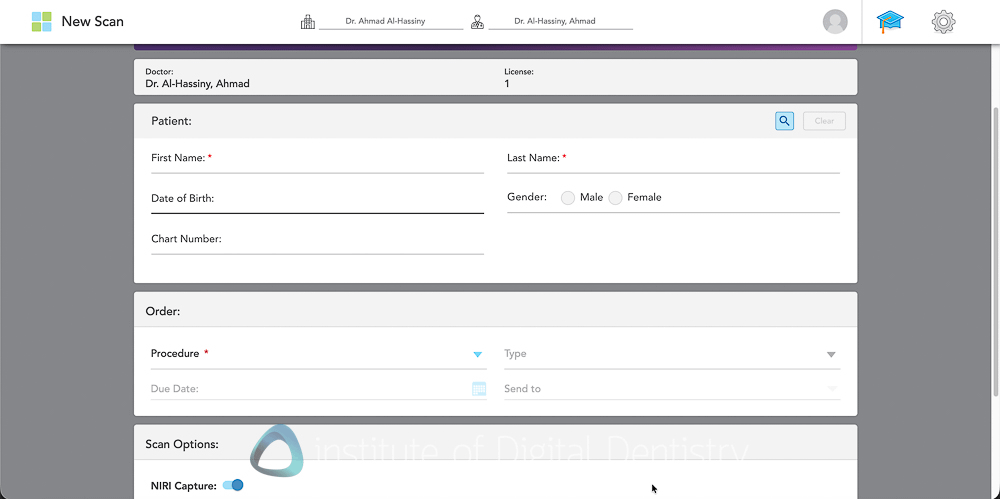
That aside, it does do some things very well, such as the MyiTero cloud platform. All scans automatically sync to the cloud and can be accessed from any computer. What I really like is how the company made the MyiTero platform on the cloud look exactly like the software platform on your scanner. This is genius and makes the entire process from scanner cart/tablet to browser feel seamless. You can even access and use all the apps on the browser, too, facilitating patient communication from chairside to sitting at a desk together with the patient. It's done very well.
Align Oral Health Suite
These are Align's patient communication and diagnostic tools that are included with all iTero scanners, including the Lumina. These are also done to a very high standard and are set in this 'Oral Health Suite' part of the software. The UI is once again simplistic but at the same time modern and visually appealing - great for patient communication.
The other great part of all of this is that you don't need to take any additional scans. Simply scan the patient, open the suite, and you'll have access to all the tools and diagnostic aids. It integrates seamlessly into the scanning workflow.
The suite includes:
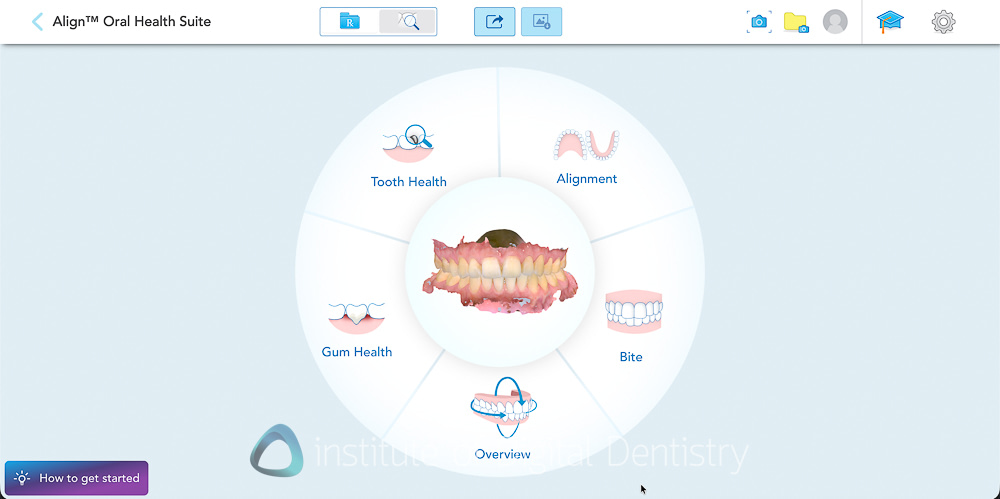
NIRI Technology: Near-infrared imaging aids in detecting interproximal caries without harmful radiation. According to Align, the technology demonstrates 66% greater sensitivity than bitewing radiographs based on clinical studies. No doubt, this is the best interproximal caries detection currently available in any scanner.
Personally, I believe the education surrounding near-infrared images in scanners is lacking, and most dentists are likely unfamiliar with what they are looking at or what is diagnostic. That is just my 2 cents. Overall, I have to say it's great tech and provides a nice diagnostic tool and perhaps a useful alternative if the patient refuses bitewing X-rays.
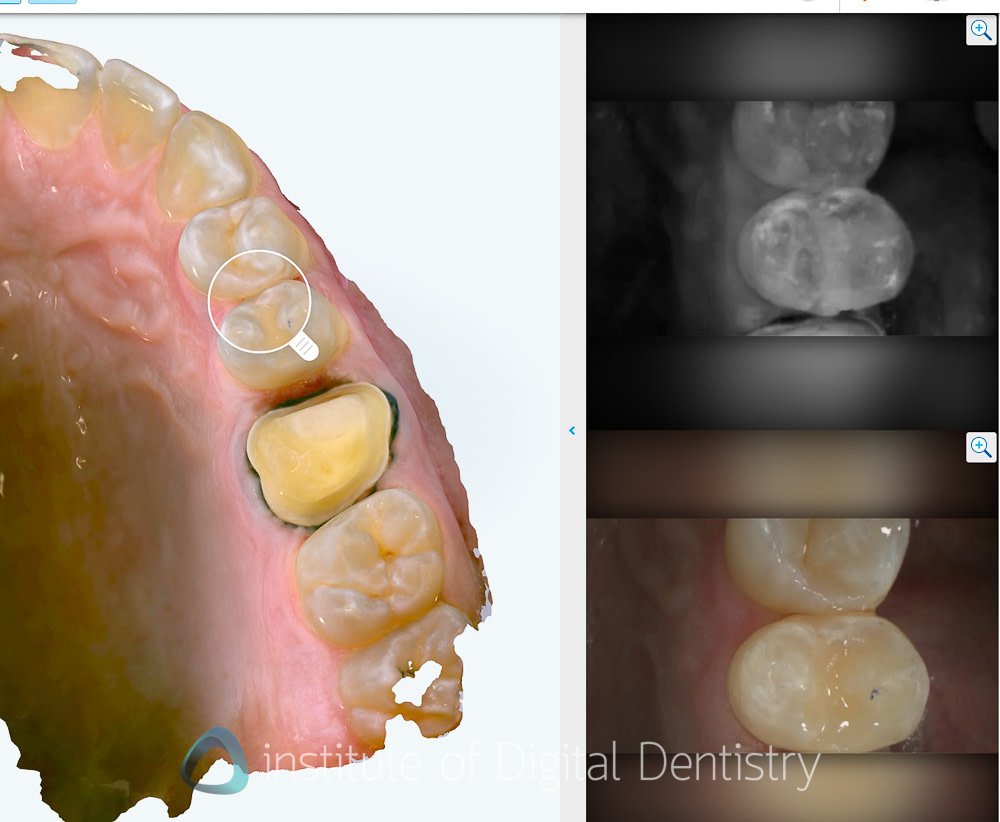
Integrated Intraoral Camera: High-definition intraoral images are captured while scanning, and multi-angle views of each tooth can be seen. Clinical applications include displaying and tracking gingival health with realistic images.
The UI is very well done here; rather than showing you multiple images, it presents you with a magnifying glass that you can put on any tooth. Then the software shows you the NIRI images and intraoral images captured in that site.
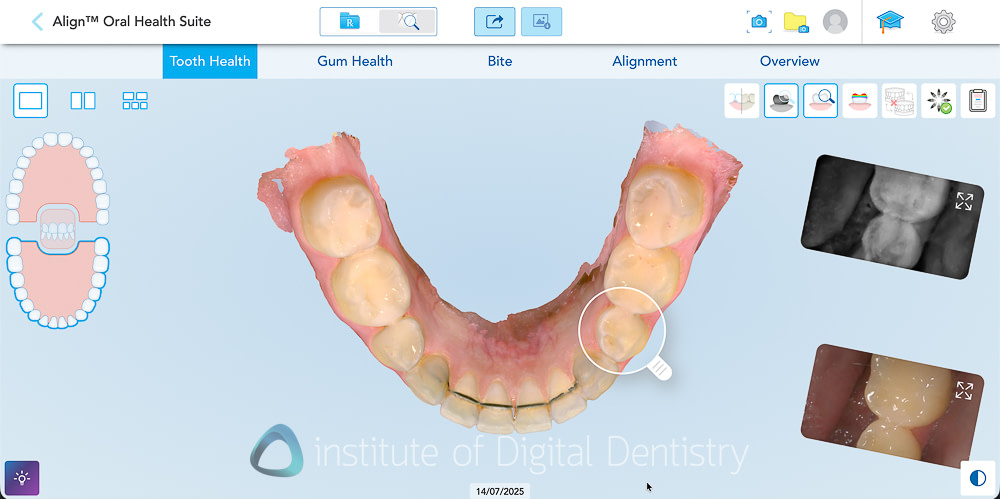
Orthodontic Simulator: Of course, the suite also includes the Invisalign Orthodontic Simulator called Outcome Simulator Pro, which is arguably the best orthodontic simulator out of all scanners. The simulations look realistic, with nice textures and colors, which is one of the things that made the iTero scanners popular early on. The simulator has been improved - it's a lot faster to run now and is a great patient communication tool
Adding to this, Invisalign Smile Architect builds on this ecosystem by introducing a restorative–orthodontic planning tool within the iTero platform. It allows clinicians to design restorative outcomes while simultaneously visualizing orthodontic movements through Invisalign treatment simulations. The integration bridges the gap between cosmetic, restorative, and orthodontic planning, enabling you to effectively communicate the effects of aligner treatment and its impact on restorative treatment.
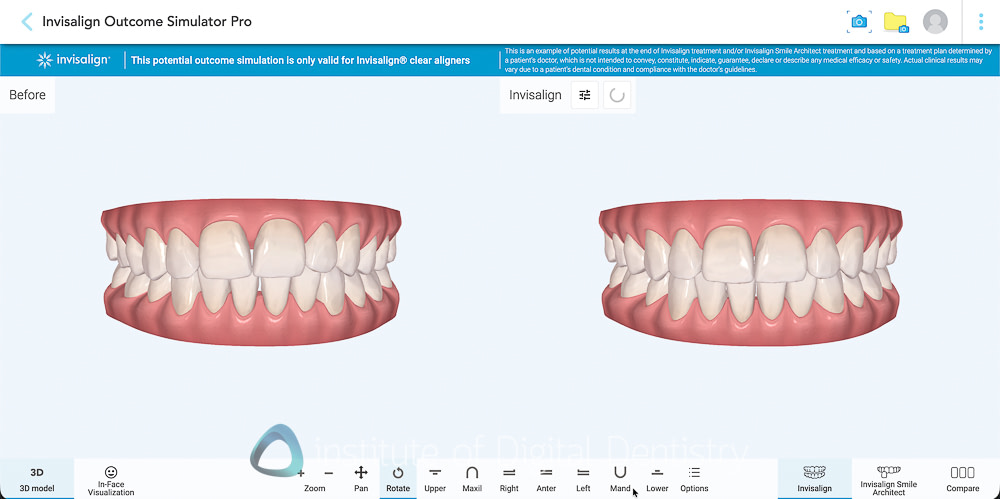
Bite Analysis and Occlusogram: Displays inter-arch contacts with clinical applications, including verification of occlusal clearance between preparations and opposing arches, and assessment of bite force distribution patterns. Nothing too exciting here, but it's nice to see it included of the suite to facilitate dialogue with the patient about their bite.
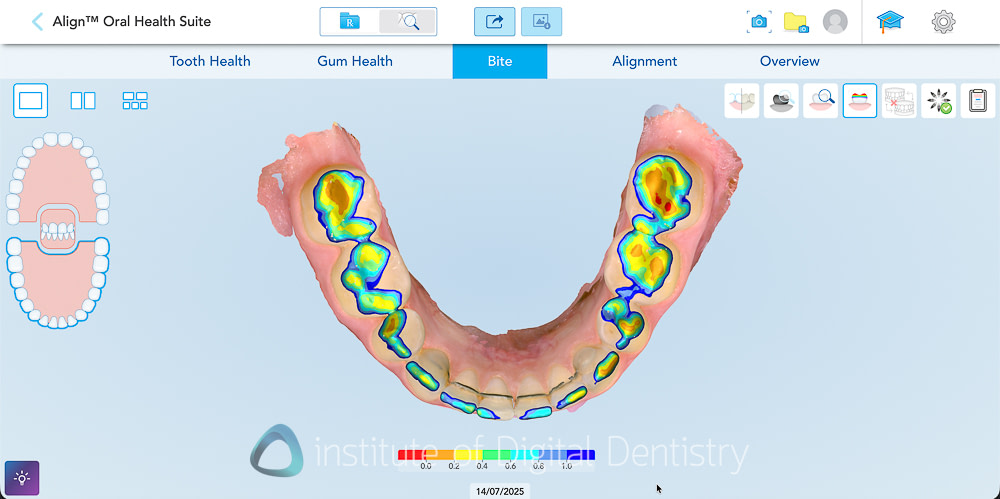
Time-lapse and Patient monitoring: Progress monitoring enables tracking of oral health evolution over time. Clinical applications include displaying consequences from bruxism, tooth erosion, gingival recession, and plaque build-up. This is another great tool in iTero's ecosystem.
Automated Scan Reports: The system automatically compiles main scans, views, and screenshots taken during consultation into personalized reports. These reports can be shared electronically with patients, providing them with reference materials accessible anytime, anywhere.
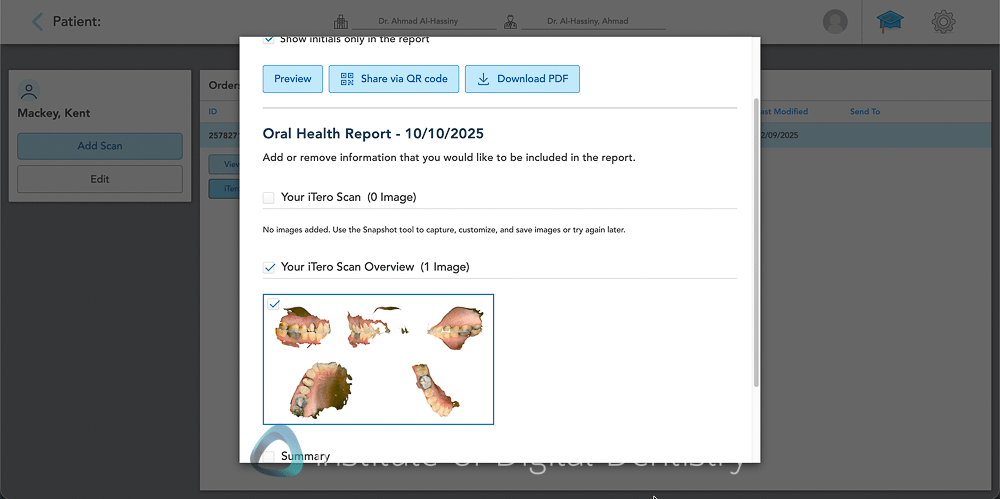
As mentioned above, these tools integrate seamlessly into clinical workflows while providing tangible value for patient education and treatment acceptance. Overall, the UI and tools are nicely done. I like the idea of combining all the apps in one place rather than having them feel disjointed and separate.
iTero Design Suite - Incredible for iTero
The integration of Exocad CAD software through the iTero Design Suite cloud platform represents perhaps the most significant advancement in chairside digital dentistry workflows that I’ve seen in a long time. This is, without a doubt, my favorite part of the entire Lumina ecosystem.
As someone who has used Exocad for years across multiple systems and is a big fan of same-day dentistry and 3D printing, I find it revolutionary that it's now available seamlessly in the cloud through the iTero platform. It’s a smart, forward-thinking move from Align Technology, positioning iTero as a truly restorative scanner rather than just an Invisalign entry point.
We saw Dentsply Sirona take Primescan 2 to the cloud and recently CEREC on the cloud, but iTero moved in this space first with the first cloud-based CAD platform. What makes the workflow so great is its simplicity and fluidity. The integration with MyiTero’s cloud storage means every scan is easily available for design without file transfers, exports, or complicated setup. You simply finish your scan, open iTero Design Suite, click Start iTero Design Suite, and begin designing. Everything happens in one connected environment.
When I first tested the platform a year ago, performance was admittedly sluggish. However, the current version has been refined considerably. It’s now fast, stable, and genuinely enjoyable to use. The interface mirrors the familiar Exocad layout that many already know, but without the usual local installation and hardware constraints. Because everything is cloud-based, you can design from any computer with internet access, whether it’s your operatory PC, a laptop at home, or a workstation in your lab. No need for expensive graphics cards, constant updates, or dongle management. It just works.
One thing to note is that iTero Design Suite does not need a download of a local software application that runs it. Even though it runs on the cloud, this download application means you cannot just do everything on the web browser and somewhat limits accessibility.
This workflow, however - scanning with the Lumina, designing restorations directly in iTero Design Suite, and then exporting to your mill or printing - is smooth, intuitive, and efficient. It’s the kind of ecosystem synergy that Align has been striving for over the years, and with the Lumina, I think they’ve finally achieved it.
In short, this is a great workflow. It transforms the iTero from a scanner into a complete chairside design and manufacturing solution. For me, it’s one of the standout features of the Lumina and a huge step forward for Align Technology in the restorative space.
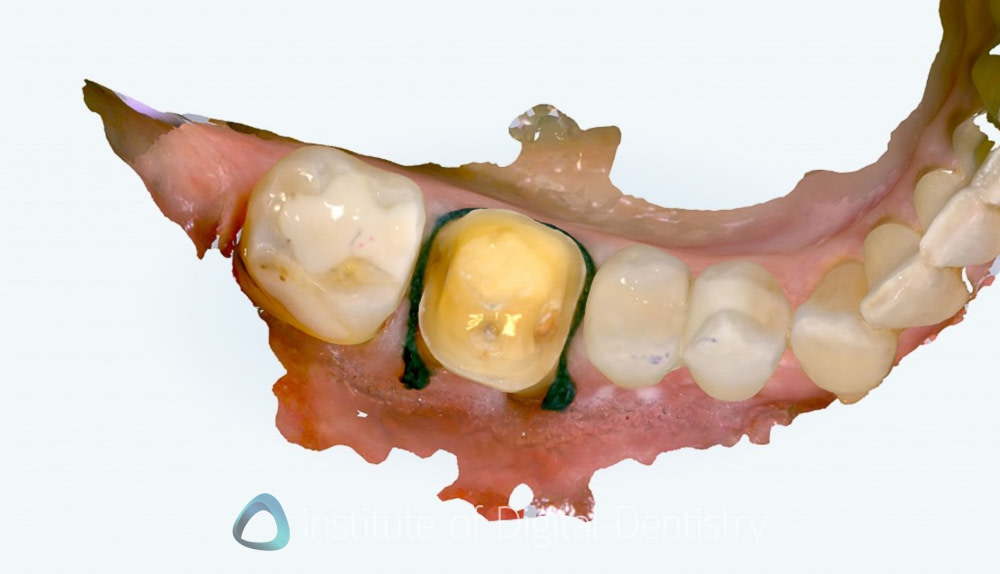
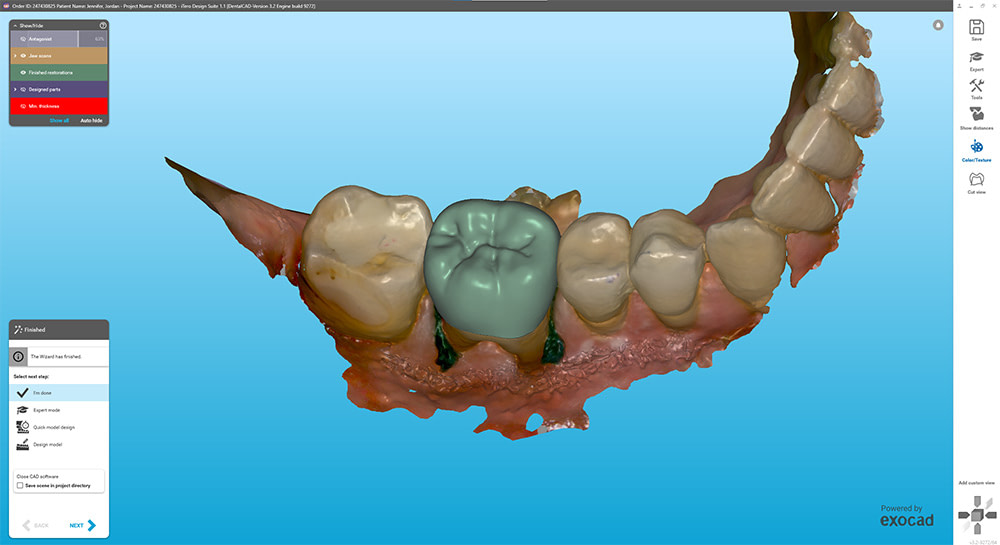
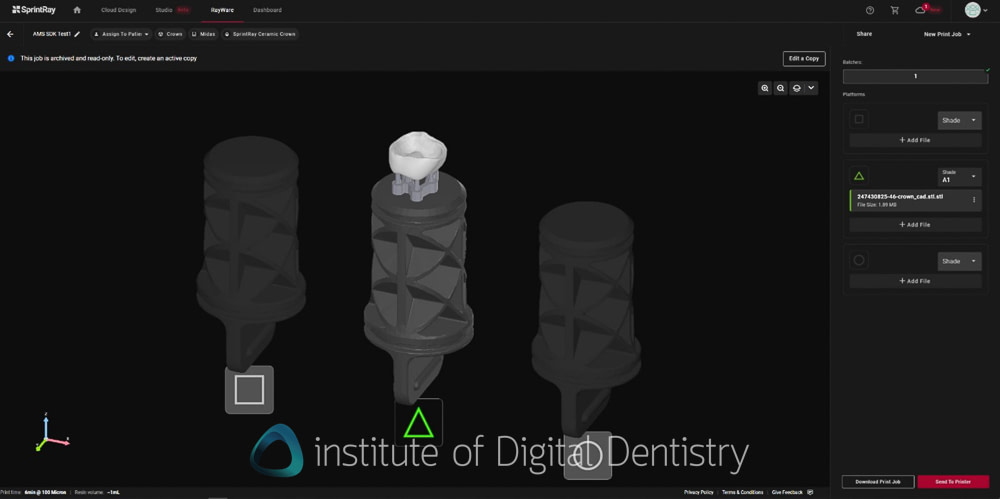
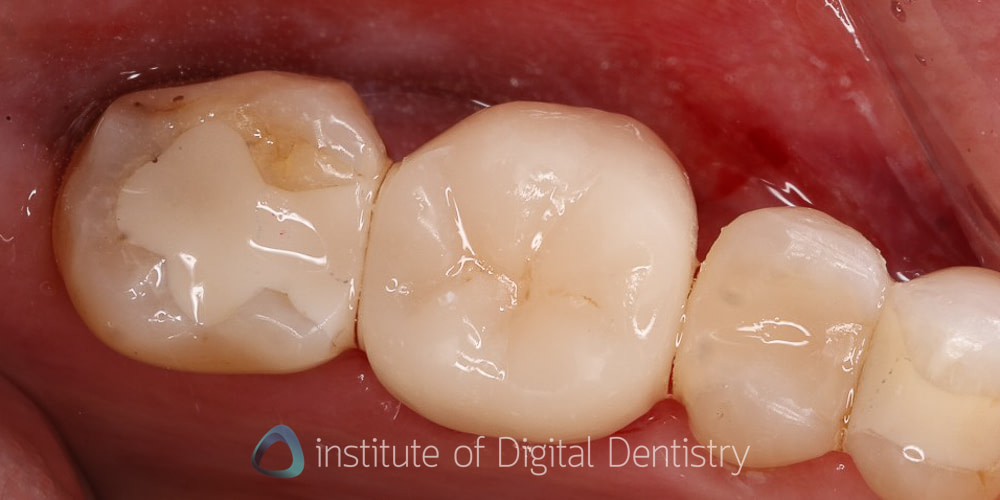
Export and Compatibility
The Lumina offers standard export capabilities in STL and PLY formats, facilitating routine lab communication through the MyiTero platform. Also, like all iTero scanners, the Lumina can be used to send directly to labs via a lab portal.
Additionally, of key feature of the Lumina is its compatibility with Invisalign, which aligns (no pun intended) with Align Technology's strategic focus on its proprietary clear aligner system. This Invisalign exclusivity represents both an advantage and a limitation. For practices heavily invested in Invisalign workflows, the Lumina is now the go-to scanner.
How Much Does the iTero Lumina Cost?
The iTero Lumina positions itself firmly in the premium scanner segment. The list price is around $45,000 USD.
There are two types of of iTero Lumina: the standard Lumina and the Lumina Pro. The only difference at this stage is that the Pro version includes NIRI caries detection, the standard does not. The Lumina Pro costs approximately $4,000 more. Both the cart and mobile tablet options have similar pricing, with the mobile (tablet) option being a few thousand dollars more expensive.
Note - List prices don't tell the whole story. iTero runs various big promotions throughout the year, including a trade-in option that allows you to exchange an older scanner from select eligible brands for a significant discount. There are also different packages available. The prices I mention are list prices in the USA, and prices vary between countries (e.g, emerging markets). For an accurate quote, discuss with your Align rep in your country.
iTero also continues to sell its older models. As it stands at list price:
- iTero Lumina = 50,000 USD
- iTero Element 5D Plus = 49,000 USD
- iTero Element 5D = 45,000 USD
- iTero Flex = 20,000 USD
One of the main 'downsides' of the scanner is the price point. It is undoubtedly a high-cost scanner, which may influence the number of new dentists who switch to the iTero brand or upgrade. Let's not discuss the potential for emerging markets to be priced out. Also, once you buy an iTero scanner, the company does not exactly make it easy for you to 'resell' this to a colleague if you change your mind. Because the scanner is tied to your MyiTero account, which is critical for its use and exporting scans, etc. In some cases, I have heard of scanners that have been locked if they are sold privately.
Moving forward, while many other companies have reduced their prices, it's interesting to see Align Technology's strategic decision to compete on features and likely its brand, rather than decrease the price tag. This will require justification through performance and software in an ever-competitive market. With the ecosystem they are building around iTero Design Suite, they may be onto something. Additionally, considering it as a complete package, if you are interested in using Invisalign, want to explore exocad, and are looking for a 'do-it-all' scanner, then the price may be more justifiable.
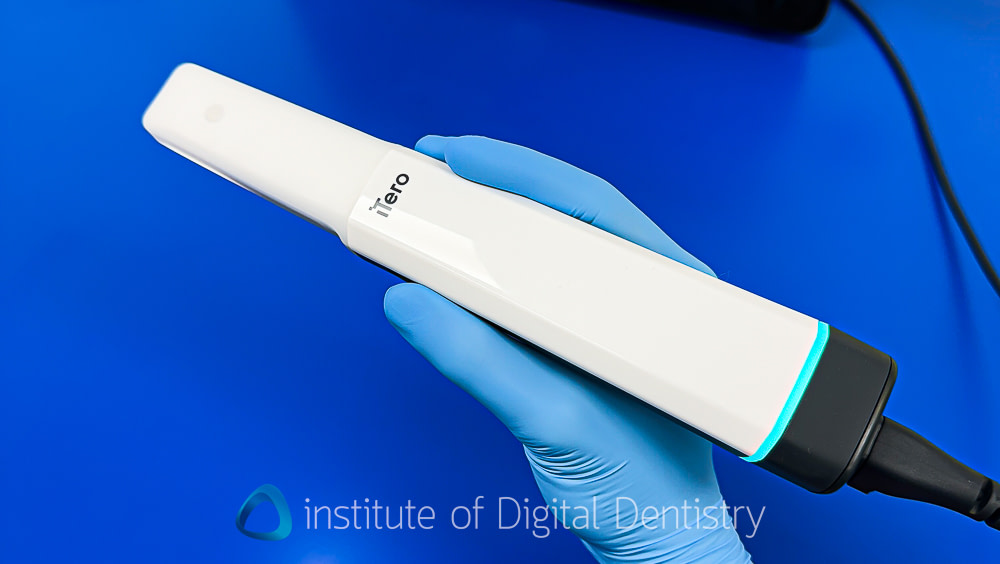
Ongoing Costs
In addition to the scanner cost, iTero charges a subscription fee for all its scanners.
This is a standard service, support, and warranty subscription seen in many scanners on the market, but Align tends to be a little more, let's say, persuasive for you to sign up for this, as without it, you get a number of features locked out.
This subscription is called the Comprehensive Service plan, which is around $380 USD per month, and includes
- Replacement Warranty + Accidental Damage
- Unlimited Cloud storage on the MyiTero.com portal + lab integrations.
- Customer support and Training
- iTero Design Suite - exocad on the cloud
If you do not opt for the Service Plan, you can still use your scanner as normal and can send it to Invisalign. However, you must pay a fee per export to the lab. You also get no software upgrades.
Paying for exports is an aggressive strategic decision in this market, essentially requiring participation of the Comprehensive Service Plan. The other additional cost is the Single-Use sleeves, as covered earlier in the review. About $3-4 per patient scan.
Conclusion
The iTero Lumina has reshaped my perception of Align Technology - not only as a capable scanner manufacturer but as a developer of a complete digital dentistry ecosystem. This release represents far more than an incremental update - it’s a reimagining of what iTero scanners can achieve in both clinical performance, software integration, and chairside CAD/CAM.
At its core, the Lumina delivers market-leading scan resolution and colors. The photorealistic textures are unmatched, offering clinical and aesthetic clarity that elevates patient communication and treatment presentation. Combined with the dramatic workflow improvements introduced in the 2025 software update, the Lumina provides a scanning experience that is excellent in a lot of ways.
The revolutionary iTero Design Suite cloud integration is arguably the crown jewel of this ecosystem. By embedding Exocad CAD capabilities directly within the iTero platform, Align has created a seamless, restorative workflow that works well for day-to-day use. This development alone could justify the scanner’s premium price tag for clinicians looking to expand into in-house design and manufacturing. The workflow is smooth, intuitive, and getting close to established chairside systems such as CEREC - especially when paired with the SprintRay MIDAS for same-day restorations.
There are trade-offs. Pricing is firmly premium - this is the most expensive scanner on the market, and the Comprehensive Service Plan (yearly subscription) is costly, and practically necessary if you want software updates, cloud perks, and to avoid per-export fees. The scanner head, while much improved, is still wider than most and can be awkward in tight distal access. The single-use sleeves add ongoing cost (and waste) compared with autoclavable tips. Software flexibility is better but not perfect - complex workflows (e.g., dentures, all-on-X) still need work.
From a value standpoint, the Lumina’s premium pricing should be viewed in the context of its package of capabilities. For practices heavily invested in Invisalign workflows, make it the go-to Invisalign scanner. The combination of diagnostic tools, patient education features, and cloud-based capabilities provides a lot of clinical value and likely helps drive treatment acceptance.
Ultimately, the iTero Lumina is a solution for clinicians who see value in the scan quality, ecosystem integration, and a forward-looking digital workflow over simple cost efficiency. For practitioners already within the Invisalign ecosystem, upgrading to the Lumina is an easy decision for me. For others, it represents an opportunity to experience Align Technology’s most sophisticated and capable scanner to date.
The Lumina has earned my respect through its innovation, clinical performance, and the cohesive digital experience it offers. Align Technology should be proud of this release. I believe this puts them back in serious contention within the premium scanner market, demonstrating that even established companies can deliver breakthrough innovations with focused development, thereby moving digital dentistry forward.
Review Overview
Evaluation Ratings
Scanning Speed
Scanning Flow
Scanner Size
Ease of Use
Scanner Software
Investment Cost
Additional Features
Wireless Scanner
Wired - Tablet or Cart configuration
Caries Detection
NIRI Caries Detection
Software Apps
Multiple Great Apps
CAD/CAM Software
iTero Design Suite (exocad)
Subscription Requirements
Essentially Mandatory
Autoclavable Tips
Single-Use Tips

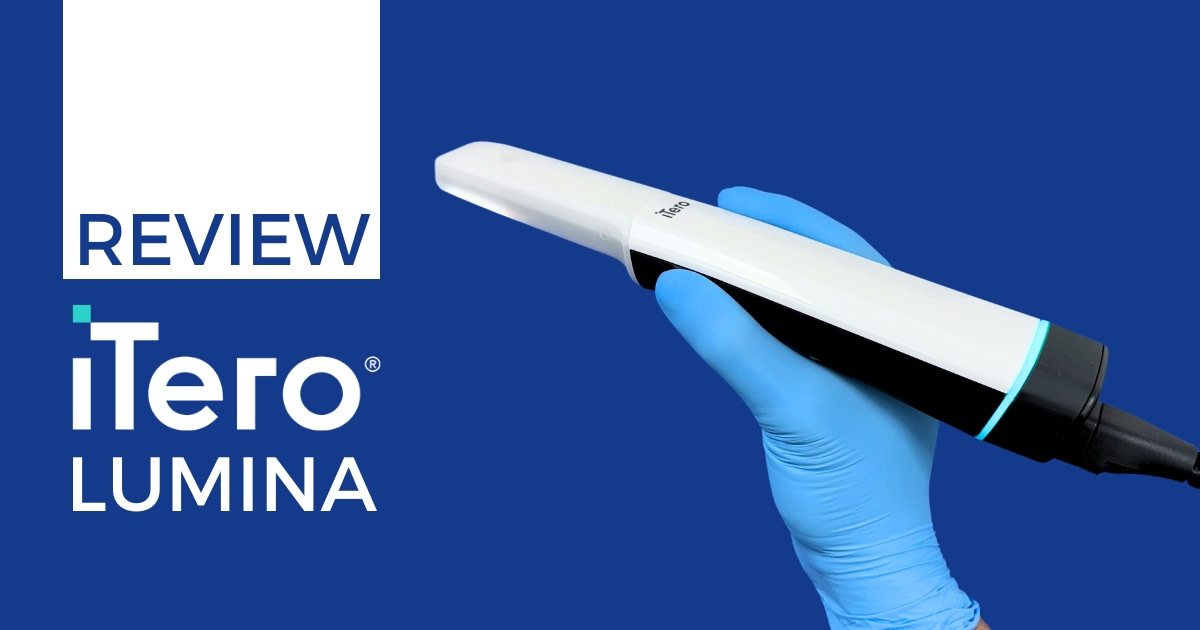
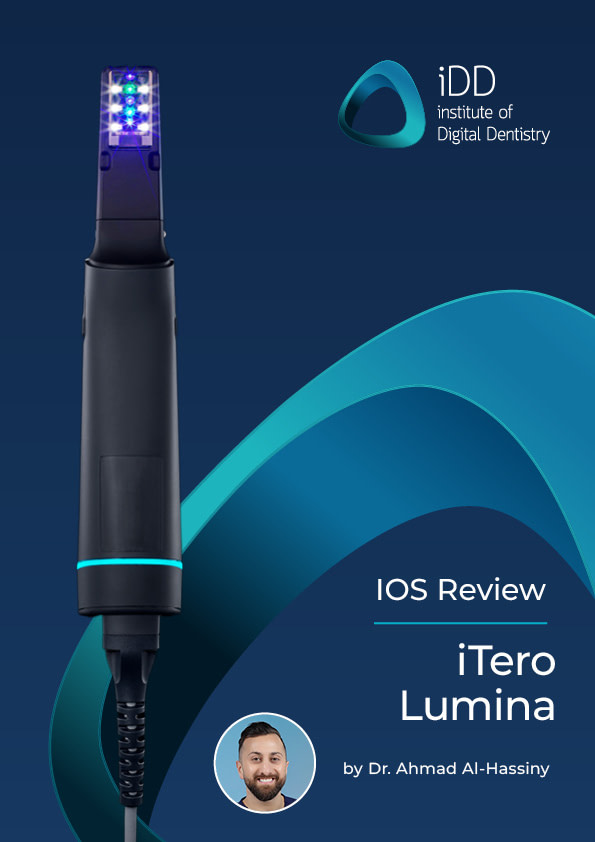
Love the review. I have had the Lumina since April and have a love hate relationship with it. My biggest complaint comes down to the margin sharpness of the preps. It would be great if you could add the monochromatic version of the same screenshots of the preps you posted in the review. The color scans look cool but I rarely use it unless there is an issue with a margin. Patient education and documentation the color scans rock. I have been using itero since 2016- Element 1, Element 2, 5D, and now the Lumina. The margins are more sharp with previous versions, but is it clinically significant? Is the Lumina more detailed and we are seeing more irregularities that were always there but now more obvious? That is what I would love to know. You can see what I am talking about in your comparison you did with the pre-restorative version of the Lumina. Even the trios 5 had some rough margin line areas.
Thanks,
Brent
Hey Brent,
Thanks so much for the thoughtful message, I appreciate it. You’re absolutely right about the margin sharpness; it’s one of the most interesting aspects of the Lumina to analyze. I’ve noticed the same thing in several of my test cases, margins can appear slightly softer compared to earlier iTero generations, even though the overall scan detail and texture capture are significantly higher. I will be posting more iDD Compares to show this soon.
I plan to do a monochrome comparison in a follow-up piece to better evaluate margin definition objectively, I’ll definitely include the same screenshots in grayscale so we can see the differences clearly. And I completely agree, the color scans shine for patient communication and documentation.
Appreciate your insights, especially from someone who’s been with iTero since the Element 1 days!
Thank you for all the great reviews! Have you noticed issues with the accuracy of the bite registration with the Lumina? I upgraded from the 5D+ to the Lumina this summer and started noticing my crowns needing more occlusal adjustments. Closer inspection of my scans shows that occlusal contacts in the mouth were actually OUT of occlusion on the scans! I can even go back and compare scans of the same patient, taken previously with the 5D+, and later with the Lumina, that show open bite registrations on the Lumina (that were in contact on the 5D+). I made a big deal out of it and iTero finally admitted it’s a known issue that they are working on. I have 20+ documented examples if you’d like to see the details.
Hey there Matt thanks for the kind words. Please send them to me at su*****@*************************ry.com
I would love to see them and have you advised your iTero Rep?
To be honest all the 3D printed MIDAS crowns I did with the Lumina were OK, so I am curious to see what is happening.